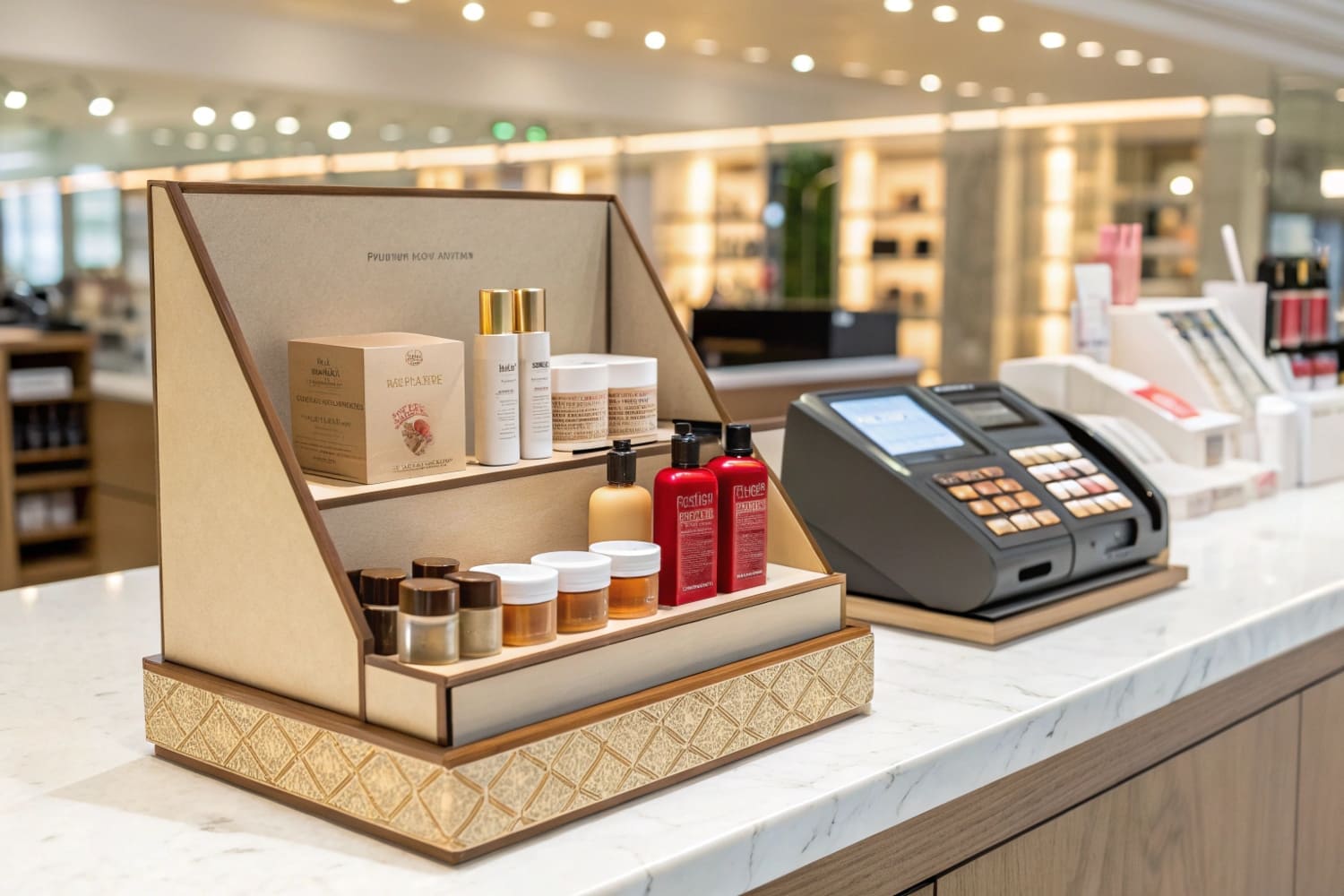I often meet buyers who feel lost in front of crowded shelves. They see clutter, feel pressure, and fear missing sales. I give them a clear plan.
Point‑of‑purchase displays include counter displays, floor stands, end‑caps, dump bins, and interactive kiosks; each type presents products where shoppers decide, adds brand story, and raises impulse sales.
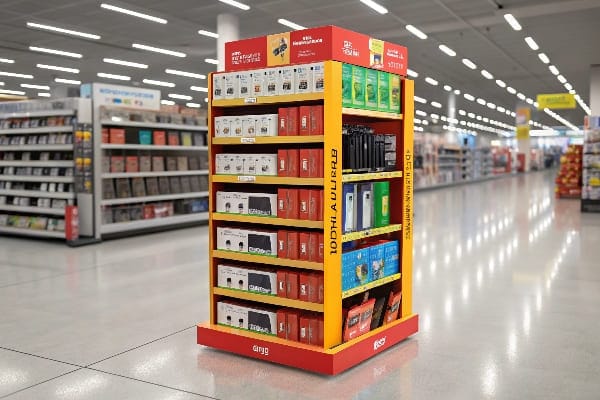
Many readers leave articles once they get a quick answer. I invite you to stay because the fine details below will help you choose the right display, avoid waste, and win repeat business.
What are the types of point of sale display?
A retail launch can feel risky. I have stood beside nervous brand owners during store set‑ups and felt their worry about space, cost, and timing.
Point‑of‑sale displays fall into counter, floor, shelf, end‑cap, dump bin, pallet, sidekick, and digital units, each matched to product size, weight, and shopper flow.
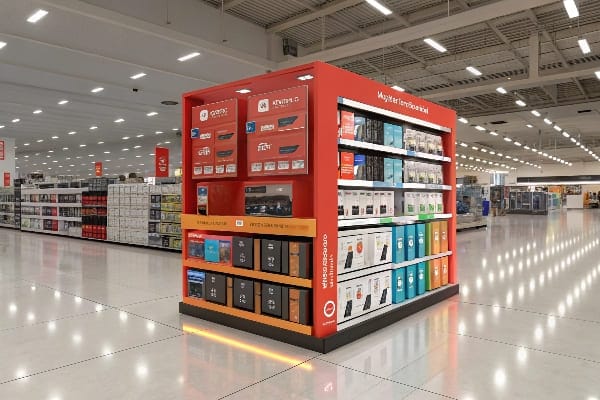
Matching Display Form to Function
When I design cardboard fixtures in my factory, I start by mapping store traffic1. A light item like chewing gum needs only a small counter unit. Heavy crossbows—yes, one client sells those—demand a reinforced floor stand2 with hidden steel bars. Size and weight decide structure, but brand voice drives graphics. Vibrant inks and tidy die‑cuts tell the story without shouting.
| Display Type | Typical Location | Ideal Product | Key Benefit |
|---|---|---|---|
| Counter Unit | Checkout desk | Small impulse | Quick grab |
| Floor Stand | Aisle center | Mid‑weight | Story space |
| End‑Cap | Aisle end | Promotions | High lift |
| Dump Bin | Bulk floor spot | Loose items | Treasure feel |
| Pallet | Warehouse club | Heavy cases | Mass impact |
| Sidekick | Rack side | Add‑ons | Cross‑sell |
| Digital Kiosk | Entry or aisle | Complex SKUs | Guided choice |
Each option balances cost, footprint, and lifespan. In my shop, counter units run two dollars apiece—fast, disposable. Pallet displays need triple‑wall board, lamination, and crash tests; the bill rises, but the ROI follows.
What is an example of a point of purchase display?
I once toured a Midwest outdoor chain and watched hunters stop cold at a vivid archery stand I built. Their eyes lit up, and baskets filled.
A free‑standing cardboard tower holding crossbow kits, wrapped in full‑color forest graphics and placed near the gun counter, is a classic point‑of‑purchase display example.
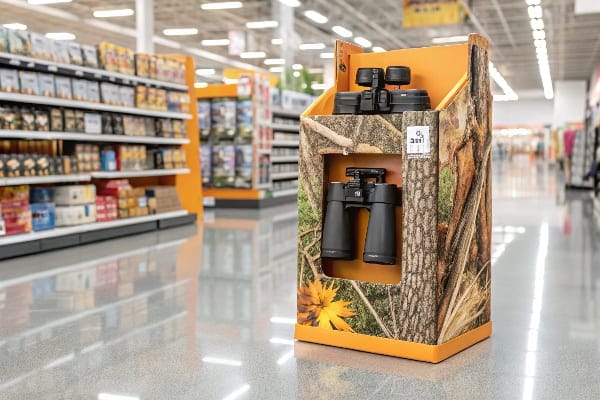
Why the Example Works
The tower sat where shoppers transition from browsing to buying. I set the height at five feet—tall enough to catch sight lines yet low enough to keep aisles open. Hooks on two sides displayed accessories, while shelves held boxed bows. A motion sensor played a soft “thwack” sound when someone passed, sparking curiosity. Sales data showed a 38 % lift in the first week.
| Feature | Purpose | Result |
|---|---|---|
| Immersive forest print | Sets outdoor mood | Emotional pull |
| Reinforced shelves | Hold 20 kg per level | No sagging |
| Motion‑activated audio | Adds sensory cue | Longer dwell time |
| QR code on header | Links to safety tips video | Builds trust |
That single unit cost under 60 USD landed. The client reordered 200 units within a month. Repeat orders prove the display’s value more than any pitch deck.
What are the different types of pop displays?
Some marketers use “POP” loosely. I break it down so they can brief designers without confusion.
POP displays range from temporary corrugated stands to semi‑permanent plastic fixtures and permanent metal or wood units, each chosen by campaign length and budget.
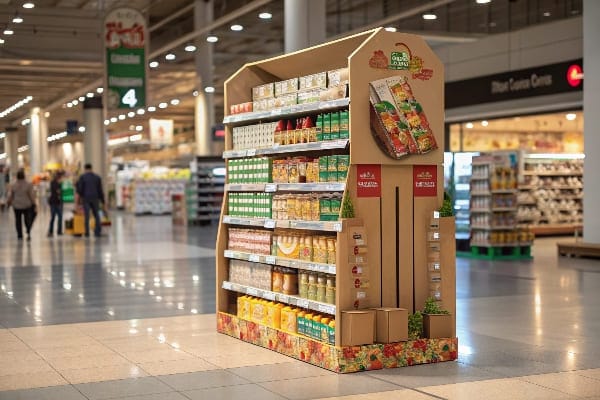
Lifespan Drives Material
Temporary cardboard3 works for four‑week promos. I make them light, flat‑packed, and easy to recycle. Semi‑permanent PETG or PVC lasts six months; I add stronger fasteners and scratch‑resistant prints. Permanent steel or wood stands4 stay for years in pro shops, so I bolt parts and powder‑coat surfaces.
| Lifespan | Common Material | Typical Use Case | Cost Range (USD) |
|---|---|---|---|
| 4–8 weeks | Corrugated board | Seasonal offer | 10–80 |
| 3–6 months | Plastic, MDF | Brand showcase | 80–200 |
| 1–5 years | Metal, solid wood | Flagship fixture | 200–800 |
Choosing the wrong tier wastes money. A seasonal coffee promo on steel racks ties up capital. A permanent ski‑boot wall in cardboard caves in. I push clients to align display cycle with product life. It saves freight, storage, and headaches.
What are the four types of point of sale system?
Many people mix software with displays. Still, the system behind the counter shapes what display data you can track.
POS systems fall into mobile, tablet, terminal, and self‑service kiosks; each handles transactions, inventory sync, and customer data with rising levels of autonomy.
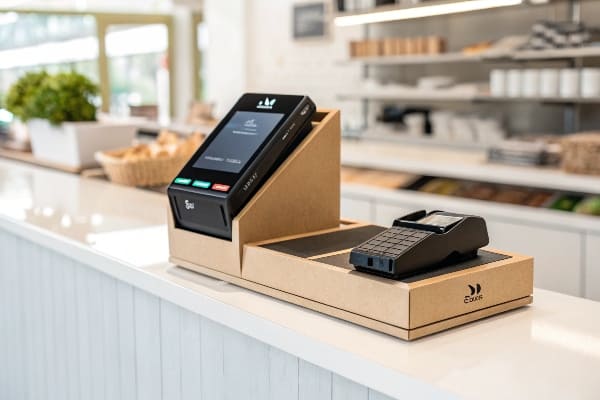
How POS Links to Displays
I sync display QR codes5 with the retailer’s POS. A mobile POS6 on the floor lets staff scan items straight off a dump bin. Tablet systems beside a sidekick give demo videos. Terminal setups at checkout read shelf tags to update stock. Self‑service kiosks pair with digital displays, letting shoppers order sizes or colors out of stock.
| POS Type | Hardware | Ideal Store Size | Display Integration Example |
|---|---|---|---|
| Mobile | Handheld | Pop‑up stall | Scan from floor stand |
| Tablet | iPad | Small boutique | Loop video on counter unit |
| Terminal | Fixed PC | Grocery chain | Promo on end‑cap |
| Kiosk | Touchscreen | Big box | Interactive product finder |
When I propose displays, I ask what POS sits behind them. Data flow matters. A QR scan tied to inventory avoids out‑of‑stock frustration and keeps trust high.
What is the difference between POS and POP displays?
Retail jargon can trip even seasoned buyers. I clarify the gap early to keep projects on course.
POS displays sit at checkout and aim to speed sales; POP displays can appear anywhere shoppers decide and focus more on education and engagement.
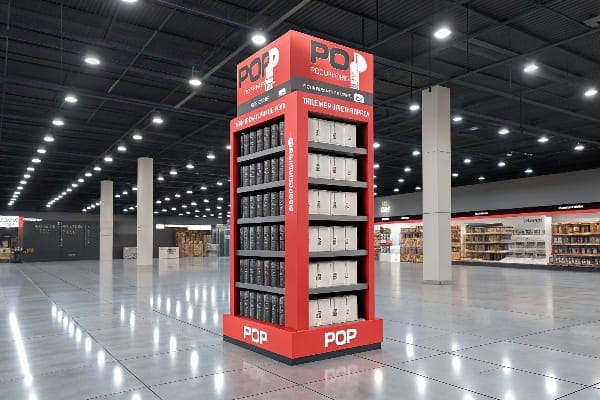
Position Equals Purpose
I remember installing gum racks at cash wraps—pure POS. Shoppers in line make small add‑on buys. Thirty feet away, a floor display for a new health drink offers samples, videos, and nutrition charts. That is POP—same store, different goal.
| Criterion | POS Display7 | POP Display8 |
|---|---|---|
| Location | Checkout counter | Any decision point |
| Dwell Time | Seconds | Minutes |
| Product Type | Low‑price impulse | New or higher‑involvement |
| Messaging Focus | Convenience, speed | Story, benefits |
| Typical Lifespan | Short | Varies (short to long) |
Mixing the two can backfire. A bulky tower crammed next to a register blocks flow and annoys both cashiers and shoppers. I map traffic before placing anything.
What are displays and point of purchase materials?
New clients often ask what “materials” cover. They fear hidden costs on substrates, inks, and treatments.
Displays and POP materials include corrugated board, rigid paperboard, foam core, acrylic, PVC, metal, wood, digital screens, specialty inks, and protective coatings chosen by budget and durability needs.
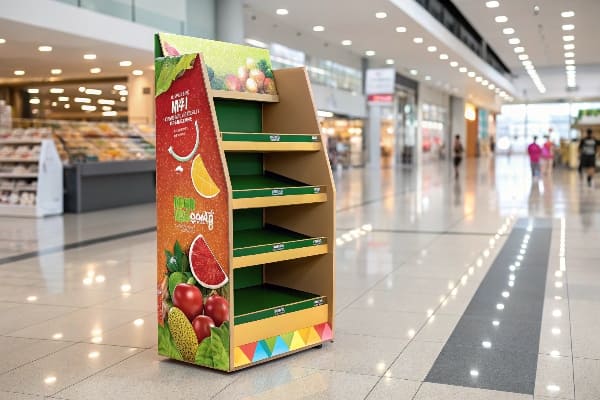
Material Choices Shape Cost and Sustainability
At my Guangzhou plant, I stock E‑flute board9 for light items and BC double‑wall10 for heavy gear. Soy‑based inks11 appeal to eco‑minded brands, while UV‑curable inks resist fading under store lights. A matte lamination reduces glare in outdoor shops; high‑gloss catches eyes in malls.
| Material | Strength | Recyclability | Typical Use |
|---|---|---|---|
| E‑flute board | Low | High | Counter units |
| BC board | High | High | Floor stands |
| Foam core | Medium | Moderate | Header signs |
| Acrylic | Medium | Low | Brochure holder |
| PETG | Medium | Moderate | Semi‑perm stand |
| Powder‑coated steel | Very High | Low | Permanent rack |
I guide buyers through samples so they can feel stiffness, weight, and finish. Touch removes doubt faster than any PDF spec sheet. Once they pick materials, we run drop tests and vibration tests to prove the choice.
Conclusion
Smart display choices marry location, lifespan, system, and material; align them, and every square foot of retail space works harder.
Understanding store traffic can enhance your display strategies, ensuring products are placed for maximum visibility and sales. ↩
Reinforced floor stands provide stability for heavier items, ensuring safety and effective presentation in retail environments. ↩
Explore how temporary cardboard can be a cost-effective and eco-friendly solution for short-term promotions. ↩
Discover the long-term benefits and cost savings of using permanent materials for retail displays. ↩
Understanding display QR codes can enhance your retail strategy by improving customer engagement and inventory management. ↩
Exploring mobile POS systems can reveal innovative ways to streamline checkout processes and improve customer service. ↩
Understanding POS Displays can enhance your retail strategy and improve sales at checkout counters. ↩
Exploring POP Displays can help you create effective marketing strategies that engage customers at decision points. ↩
Learn about E-flute board’s lightweight properties and its ideal uses in packaging, enhancing your understanding of material choices. ↩
Discover the benefits of BC double-wall materials, including their strength and recyclability, to optimize your packaging solutions. ↩
Explore the advantages of soy-based inks, including their eco-friendliness and print quality, to make informed choices for sustainable packaging. ↩

